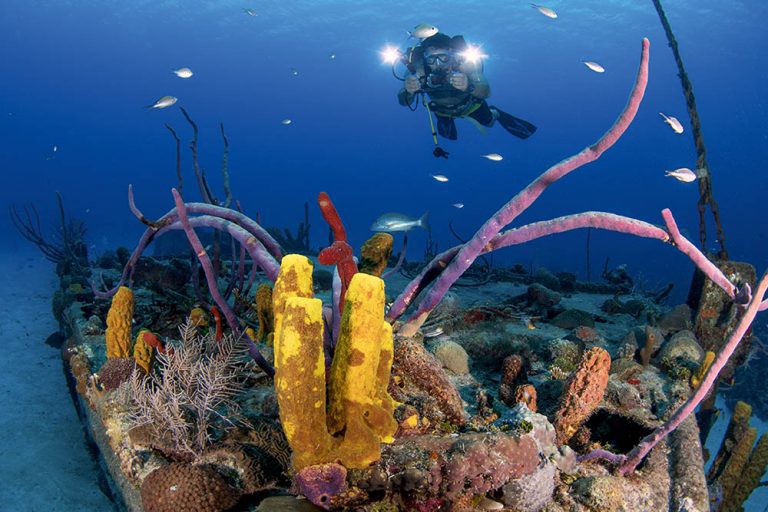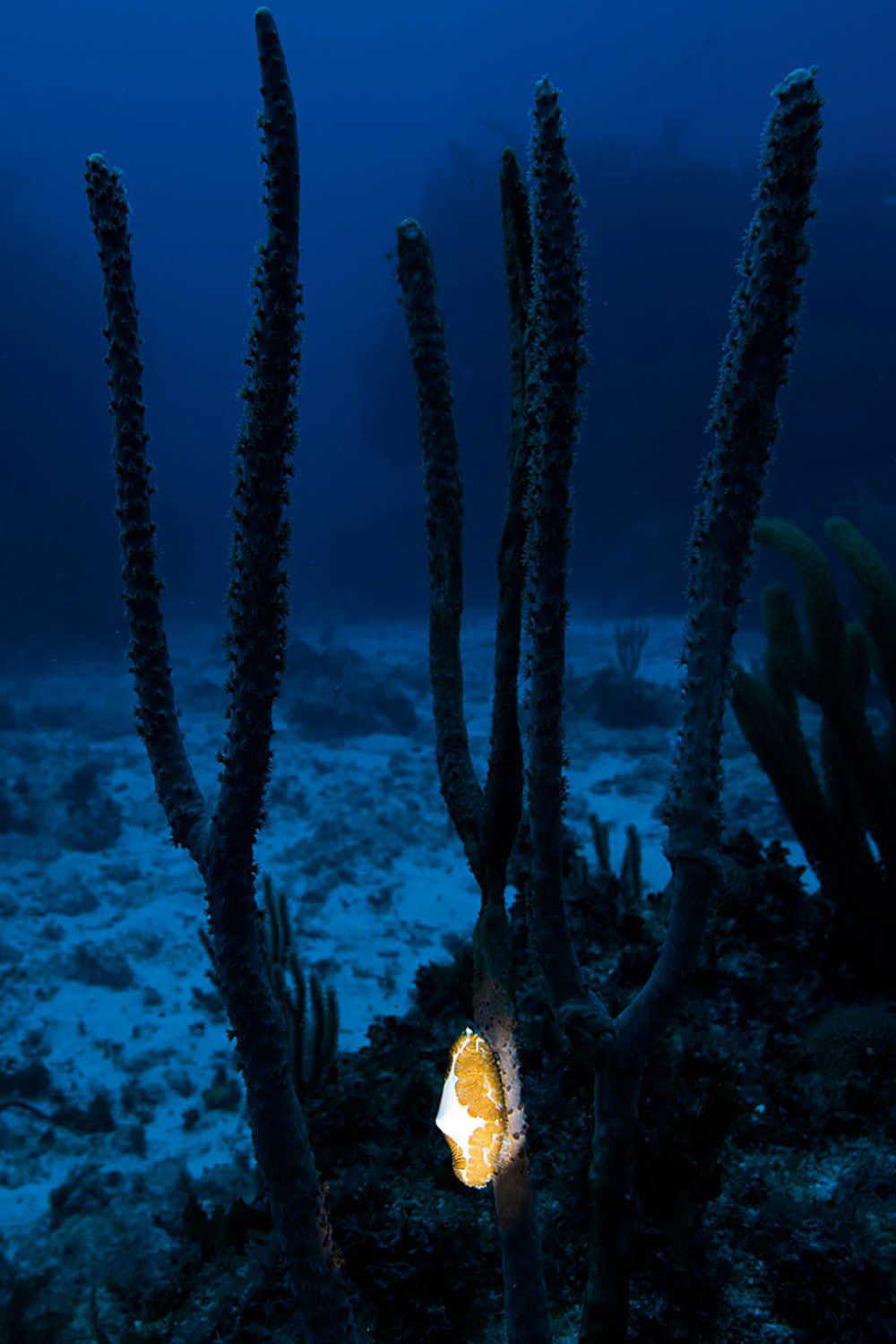PHOTO DIVER
Snoots not just for macro
 The snoot provides a means of getting some variety into your underwater photographs, but Susannah H Snowden-Smith has enjoyed seeing how far she can extend the technique.
The snoot provides a means of getting some variety into your underwater photographs, but Susannah H Snowden-Smith has enjoyed seeing how far she can extend the technique.
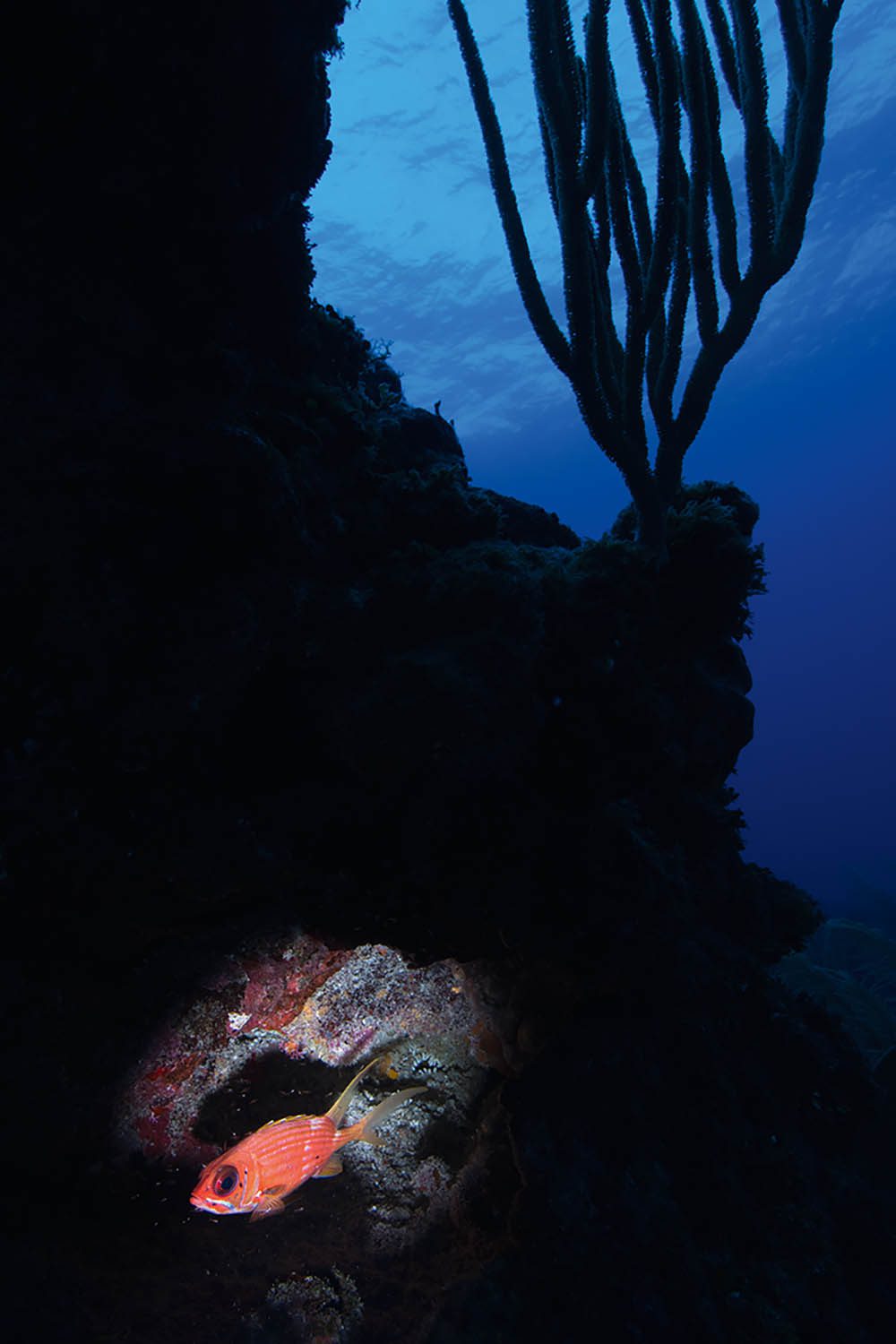
A squirrelfish peers out from a small hole in the reef as it’s highlighted by a snoot. A gorgonian and the reef are cast in silhouette.
as an underwater photographer based in Grand Cayman, I get to dive year-round. If there’s any downside to this – and let’s face it, that’s a hard sell – it means that I’m shooting the same subjects, a lot.
The challenge then becomes how to shoot the same fish, wrecks, reefs in a different way. Cue the creative juices!
One technique I’ve been working with is using a snoot in wide-angle images. Traditionally the domain of macro photos, a snoot can also add pop to wide-angle.
Like macro snooting, wide-angle snooting isolates the subject. But, unlike macro, it highlights only a small portion of the frame, enabling dark blue water and black silhouetted shapes to both contrast nicely with a colourful snooted subject, and provide context. This makes for some unusual artistic effects.
One option is to use an old wetsuit sleeve or blacked-out soda bottle fitted around the strobe.
For the photographs here, I’ve used a Retra LSD snoot originally bought for shooting macro images. It’s very easy to use, and is available to fit a wide variety of strobes – I have one that fits my Sea&Sea YS-250.
The snoot comes with slide-in apertures in different shapes and sizes that allow for greater flexibility when shooting.
Snooted wide-angle works well with both fisheye and a longer rectilinear lens. Here I’ve shot with a 10-17mm, 10-17mm with 1.4 teleconverter, and a 12-24mm.
All three lenses provide a wide-angle view, enabling the silhouetted backgrounds and context in the shot.
For fisheye shots, take care to hide the snoot behind the lens so that it won’t accidentally appear in the image.
Both the 10-17mm with 1.4 teleconverter and 12-24mm work well for skittish subjects. With a slightly greater working distance, they’re less likely to be scared off.
A great creative use of wide-angle snoot is to shoot with a shutter-speed high enough to create a silhouetted scene around the subject.
For clear water, a shutter-speed between 1/160th and 1/250th is ideal to create this effect, depending on depth and water conditions.
A full blast of strobe light tends to blow out your subject, so start with your strobes on half- power or less to illuminate the subject and adjust from there.
Remember, you’ll also need to dial your strobe power up or down, depending on how far you are from the subject you’re highlighting.
For one-handed snooting, place the snoot on the left strobe, which enables you to angle it with your left hand while clicking the shutter with the right. With the focus light on, it’s easy to direct the strobe at your subject.
You can even look through the lens at the focus-light beam to line it up correctly. Just remember to turn off the focus-light between shots, so that the battery doesn’t run down.
And loosen your clamps a touch more than usual to make it easy to manipulate the snoot and direct the light.
Appeared in DIVER November 2018
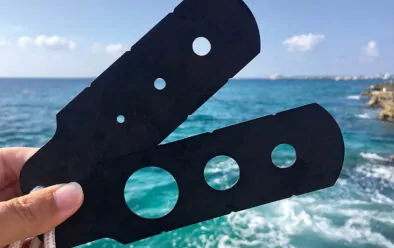
The Retra LSD snoot comes with a variety of apertures: different size openings that slide into the snoot so you can customize both the amount of light and its shape.
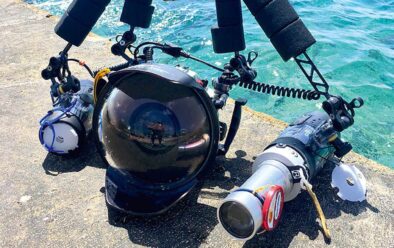
The Retra LSD snoot is on left strobe so it can be manipulated with the left hand while the shutter is depressed with the right.
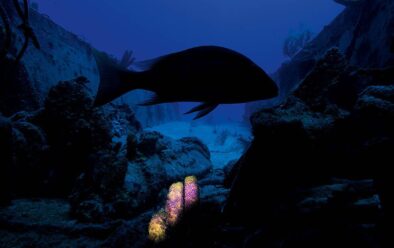
Sponges on the Nicholson shipwreck are highlighted by a Retra LSD snoot as a snapper swims by. Photographed with a Nikon 12-24mm lens at Sunset House.
my set-up can be seen below. Many thanks to fellow underwater photographer Lilian Koh for the info on her custom ice-cream lens cover – you can see the one I made based on her design (mango was the flavour du jour!)
The cap protects the snoot lens when it’s not being used, and on busy boats. I recommend clipping the snoot to your BC during the dive, and placing it on the strobe when you need it.
That way you’re free to shoot traditional wide-angle as well as snooted images on the fly.
The Retra snoot comes with a variety of apertures, different-sized openings that slide into the snoot to customise both the amount of light and its shape.
Occasionally one of the circular apertures is helpful for wide-angle snooting, but it isn’t usually necessary to use a slide aperture, because without one you get a circle of light big enough for most wide-angle subjects anyway.
When I shot the fingerprint cyphoma (above), I hadn’t planned on shooting smaller subjects and had no aperture sliders with me.
No problem: I simply moved my snoot in close until I had a sharp beam of light on the cyphoma.
Wide-angle snooting is a fun technique, another option for creativity and also gives more time in the water to a piece of equipment conventionally used in macro shooting – which is helpful if you’re having to justify its purchase to your partner.
